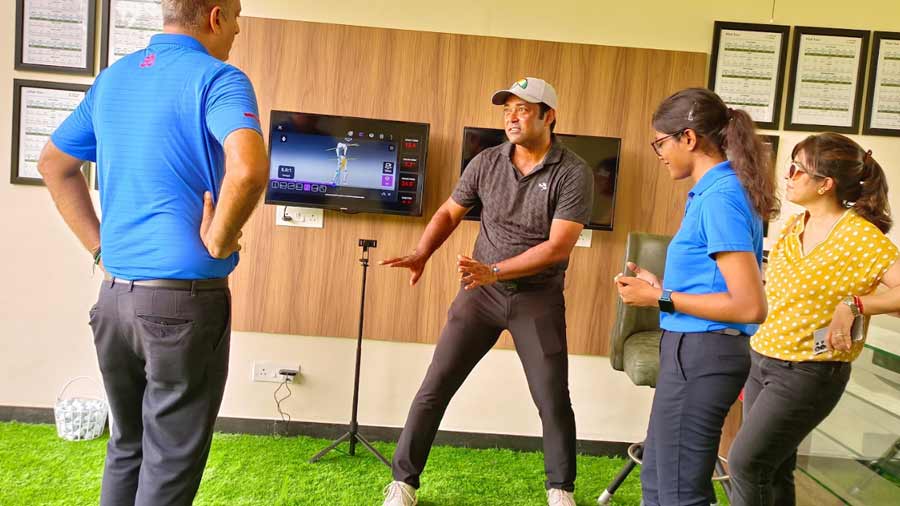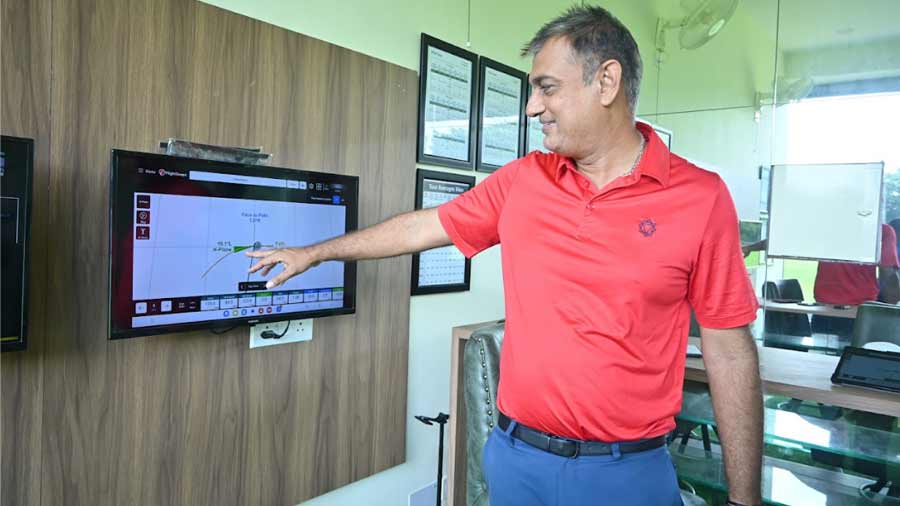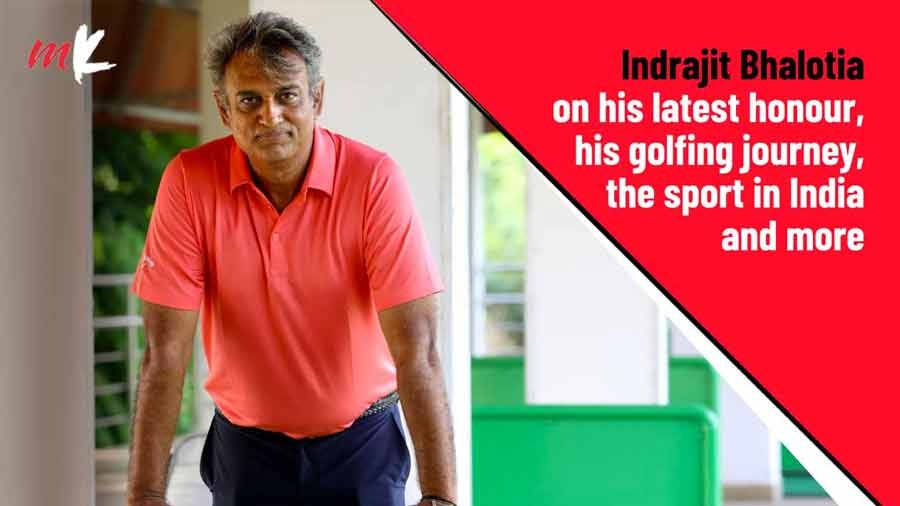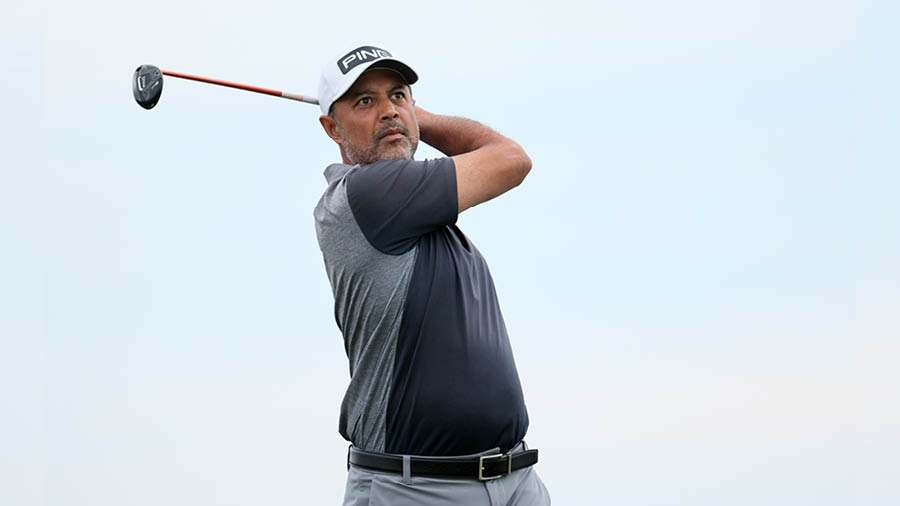In the coming decades, the most valuable player in the world of sports is likely to be Artificial Intelligence (AI). From the Video Assistant Referee (VAR) in football to the Decision Review System (DRS) in cricket to the elaborate scouting process in the National Basketball Association (NBA), AI is already an integral part of several sports, with its value in the industry set to reach $19 billion by 2030. While the use of AI to analyse player performance is gradually emerging across the finest sporting institutions, golfers interested in examining their game can now look to golf guru Indrajit Bhalotia’s The Champ for Life Academy (CFL) at Tollygunge Club, which launched India’s first AI-integreated golf studio earlier this month. “I’ve used this studio and it’s fascinating how just one camera can give you a 360 degree view. I’m sure this technology will help our juniors and golfers get world class coaching in the city and grow into international champions,” said 16-time Grand Slam doubles champion and tennis icon Leander Paes, who was one of the first athletes to try out the AI facility.

Leander Paes trying out the AI technology at the CFL studio in Tollygunge Club CFL Academy
Partnering with US-based company Sportsbox AI, CFL, which is run by Protouch Sports, is the only place in India, and among a select few on the planet, to have integrated AI to provide detailed, real-time feedback to golfers, both professional and amateur. “It’s a remarkable technology that’s going to be a game-changer,” said Indrajit, whose deep dive into how AI can help golf led him to Sportsbox AI. Impressed with the seemingly infinite data that the Sportsbox AI 3D Box application can provide, Indrajit purchased it for CFL at an “extremely high cost”, in addition to buying monitors, tabs and other equipments to create a state-of-the-art ecosystem at the CFL studio in Tollygunge Club. “This is something that’s going to shape the future of golf. For our part, we’re offering it at very subsidised rates to members of the academy, including junior golfers, and giving it out for free to underprivileged students,” described Indrajit.
‘Golf is increasingly becoming a technical game where everyone is looking at the numbers’

(L-R): Udayjit Bhalotia, Indrajit Bhalotia and Siya Manna, who are responsible for introducing and managing the latest technology at CFL Amit Pramanik
The way the AI technology works is even more mind-boggling than a perfect Tiger Woods swing. Using a high-quality smartphone (ideally an iPhone), a slow motion video of a golfer’s swing is captured at 240 frames per second. Then the video, which is a handful of seconds long, is uploaded instantly on the Sportsbox AI app, which uses six angles — face-on, down-the-line, behind, from target, above and below — alongside 64 parameters to create a 3D avatar of the player and break down every imaginable aspect of the swing. “From the speed of the swing to the movement of the body parts, a wide range of data points can be studied and compared against the average range that PGA and LPGA Tour professionals achieve,” explained Siya Manna, the tech and biomechanics expert handling Sportsbox AI, which deploys 3D motion analysis and kinetic AI technology, as developed by computer vision and AI scientists.
“Golf is increasingly becoming a technical game where everyone is looking at the numbers. This software can be used to understand where a player is going wrong. For instance, if I can catch a problem with someone’s swing with the naked eye, I can then use the data to hone in on the exact parameters that need changing to fix the swing. Even though players of all levels and calibre can benefit from this, advanced players can probably benefit the most, as the finest of margins can now be detected and deliberated upon,” said Udayjit Bhalotia, who is heading the CFL studio.
‘A radar to track 14 parameters related to the golf club and 12 parameters related to the ball’

Indrajit explains how the launch monitor works Amit Pramanik
Before Sportsbox AI was introduced, CFL was using a four-camera 2D setup to analyse players, a rare and advanced provision in itself. But the incorporation of AI has taken things to the next level, while also making it possible for Indrajit, Udayjit and Co. to study players’ swings through videos that can be sent remotely from any corner of the world and uploaded on the AI cloud. “One of the golfers who trains at CFL was turning 60 degrees during his swing, whereas he needed to turn 80 degrees to execute a better hit. Using AI, I was able to spot that and fix it. It’s something I couldn’t have measured before using just my eyesight,” narrated Indrajit, who drew the analogy of Sportsbox AI being an MRI scan as opposed to the simple X-rays that used to be available earlier.
To further augment player analysis and assessment, CFL has also installed a launch monitor — “a high-tech and expensive device in its own right” — to shed even more light on the swing, its contact with the ball and the subsequent flight of the ball. “We have a radar to track 14 different parameters related to the golf club and 12 different parameters related to the ball. Everything from the angle of the swing to the spin and curve on the ball is covered,” observed Indrajit.
Smash factor and X-factor are among the key parameters

A glimpse into the numerous data points that the Sportsbox AI software offers Amit Pramanik
With so many parameters vying for attention, how does an expert weave their way through the maze of data to arrive at insights? Indrajit and Udayjit’s response was as follows: “Out of all these statistics that are now at our disposal, there are a few key numbers that we focus on first. One of them is the smash factor, which is the amount of energy transferred from the club head to the golf ball. The higher the smash factor, the better the energy transfer. Another is the X-factor, which is the difference between the shoulder turn and the hip turn at the top of the backswing. The higher the difference, the more the torque on the shot.”
While Indrajit is confident that AI is going to be instrumental for the future of golf, he is quick to issue a reminder regarding the continued need for human expertise: “No matter the technology you have at a hospital, you still need a good doctor to make sense of it all and produce the right assessment. It’s the same thing with AI and golf. The integration of AI makes it essential that the right teacher or coach is on hand to guide and advise players correctly, having understood which data points to factor in and prioritise.”
CFL’s adoption of Sportsbox AI is a turning point for sports development in India, which is a long way behind the likes of the US, the UK and Australia when it comes to embracing technology to give athletes the ultimate edge. With time, Indrajit believes that AI can be used in Kolkata and India more extensively for “cricket, tennis and other sports”, throwing open a vast pool of possibilities. For now, though, golf is where the everyday use of AI in sports coaching in the city has teed off. While CFL’s AI studio cannot yet make you play like the top golfers in the world, it can take you several steps closer towards understanding the gulf that separates the best from the rest.

